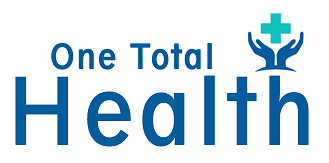What are the advancements in Deep Brain Stimulation
Introduction
Deep Brain Stimulation (DBS) is a revolutionary neurosurgical technique that involves implanting electrodes into specific areas of the brain to modulate neural activity and alleviate symptoms of various neurological disorders. Originally developed to treat movement disorders such as Parkinson’s disease, DBS has evolved significantly over the years, with advancements in technology, surgical techniques, and patient selection criteria. In this comprehensive guide, we’ll explore the latest advancements in Deep Brain Stimulation and how they are transforming the field of neurosurgery. Whether you’re a patient considering DBS treatment or a healthcare professional seeking the latest updates, this guide will provide valuable insights into the cutting-edge developments in DBS.
Advancement 1: Targeted Stimulation with Directional Leads
One of the significant advancements in DBS technology is the development of directional leads, which allow for more precise and targeted stimulation of specific brain regions. Traditional DBS leads emit electrical impulses in all directions, affecting both target and surrounding areas of the brain. Directional leads, on the other hand, can steer electrical currents in specific directions, enabling neurosurgeons to tailor stimulation to individual patient needs while minimizing side effects.
Advancement 2: Closed-Loop Systems for Adaptive Stimulation
Closed-loop DBS systems, also known as adaptive DBS, represent a significant breakthrough in neuromodulation technology. Unlike traditional open-loop systems, which deliver continuous stimulation regardless of neural activity, closed-loop systems monitor brain activity in real-time and adjust stimulation parameters accordingly. This dynamic approach allows for more personalized and responsive therapy, potentially improving treatment outcomes and reducing side effects.
Advancement 3: Image-Guided Surgical Techniques
Advancements in imaging technology, such as high-resolution MRI and intraoperative CT scans, have revolutionized the surgical planning and placement of DBS electrodes. Neurosurgeons can now precisely target specific brain structures with submillimeter accuracy, minimizing the risk of damage to surrounding tissues and optimizing electrode placement for optimal therapeutic effects.
Advancement 4: Miniaturization and Longevity of Implantable Devices
Recent advancements in miniaturization and battery technology have led to the development of smaller, more durable implantable DBS devices with longer battery life. These compact devices are less invasive to implant and offer greater flexibility in programming and adjusting stimulation parameters. Longer battery life means fewer surgical interventions for device replacement, reducing the burden on patients and healthcare providers.
Advancement 5: Multimodal Approaches to Neurological Disorders
Researchers are exploring the potential of DBS as a treatment modality for a wide range of neurological and psychiatric disorders beyond movement disorders. Clinical trials are underway to investigate the efficacy of DBS in conditions such as epilepsy, depression, obsessive-compulsive disorder (OCD), Tourette syndrome, and Alzheimer’s disease. These efforts represent a paradigm shift in neuromodulation therapy, offering hope to patients with previously untreatable conditions.
Advancement 6: Remote Monitoring and Telemedicine
The integration of remote monitoring and telemedicine technologies into DBS care has the potential to improve patient outcomes and enhance healthcare delivery. Remote monitoring systems allow healthcare providers to monitor patient status, adjust stimulation parameters, and troubleshoot issues remotely, reducing the need for frequent clinic visits and improving patient access to care, particularly in rural or underserved areas.
Advancement 7: Personalized Medicine and Predictive Modeling
Advancements in genetics, neuroimaging, and computational modeling are paving the way for personalized approaches to DBS therapy. By analyzing individual patient characteristics, such as genetic markers, neural circuitry, and symptom profiles, clinicians can tailor DBS treatment to each patient’s unique needs and optimize therapeutic outcomes. Predictive modeling techniques allow for more accurate predictions of treatment response and prognosis, helping clinicians make informed decisions about patient selection and therapy optimization.
Advancement 8: Non-Invasive Neuromodulation Techniques
In addition to invasive DBS surgery, researchers are exploring non-invasive neuromodulation techniques such as transcranial magnetic stimulation (TMS) and transcranial direct current stimulation (tDCS) as alternative or adjunctive treatments for neurological disorders. These non-invasive approaches offer the potential for targeted neuromodulation without the need for surgery, making them suitable for patients who may not be candidates for DBS or prefer non-invasive options.
Advancement 9: Closed-Loop Brain-Computer Interfaces (BCIs)
Closed-loop brain-computer interfaces (BCIs) represent a promising avenue for next-generation DBS therapy. These systems use real-time neural signals to modulate stimulation parameters, enabling bidirectional communication between the brain and external devices. Closed-loop BCIs offer the potential for more precise and adaptive neuromodulation, as well as enhanced brain-computer interaction for patients with severe neurological impairments.
Advancement 10: Collaboration and Multidisciplinary Care
Advancements in DBS technology are the result of collaboration and multidisciplinary teamwork among neurosurgeons, neurologists, engineers, scientists, and industry partners. By fostering collaboration and sharing knowledge across disciplines, researchers can accelerate innovation, optimize treatment protocols, and improve patient outcomes in the field of neuromodulation.
Conclusion
The field of Deep Brain Stimulation (DBS) is rapidly evolving, with advancements in technology, surgical techniques, and patient care transforming the landscape of neuromodulation therapy. Targeted stimulation with directional leads to closed-loop systems for adaptive stimulation, the latest developments in DBS offer new hope and possibilities for patients with neurological disorders. As research continues to expand our understanding of brain function and neuromodulation mechanisms, the future of DBS holds promise for personalized, effective, and minimally invasive treatments. For individuals seeking treatment for neurological conditions, consulting with neurosurgeons in Bangalore who specialize in DBS can provide access to cutting-edge therapies and personalized care. With ongoing innovation and collaboration, the future of DBS is bright, offering hope and improved quality of life for patients worldwide.



